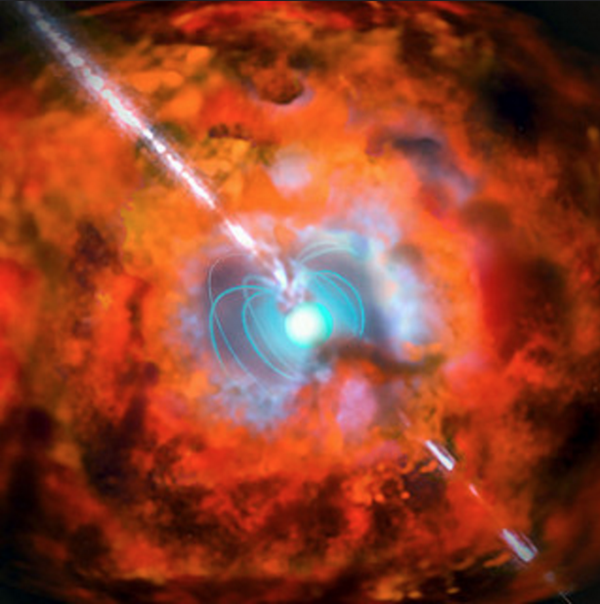You might as well call PSR J1119-6127 sasquatch, because it seems to be a “missing link” in neutron stars, according to Walid Majid of JPL.
At an announcement on January 6 at the 229th meeting of the American Astronomical Society, Majid laid out his findings. PSR J1119-6127 (J1119) seems to split its time between two known states of neutron stars: a pulsar, which is a rhythmic pulsation in the core of a supernova remnant, and a magnetar, a kind of pulsar whose emissions are driven by a decaying magnetic field instead of the spin of the star itself.
Both magnetars and pulsars are a type of neutron star. Neutron stars are ultra-dense remnants of massive stars that exploded into supernovae. They are one of two supernova outcomes, with the other being black holes. All neutron stars have magnetic fields.
Pulsars get their name from a “pulse” emitted every time the magnetic field of the star points toward Earth. Though pulsars are invisible to most optical instruments, they are strong radio wave emitters, and the universe’s great time keepers, pulsing only at certain intervals — though this can be on the magnitude of a millisecond.
But J1119 doesn’t have a regular pulse. Sometimes, its rhythm has changed. Other times, it’s not pulsing in the same frequency at all, but bursting forth in activity. But when it’s in a pulsation phase, it seems to keep a rhythm for the duration of that phase.
“Basically this object is normally a pulsation-powered pulsar in its normal state, but it begins to show clear magnetar-like behavior,” Majid said.
Of the 2500 known pulsars in the Milky Way, J1119 is the first to display this kind of behavior. But it may not be all that uncommon. Instead, it may just be part of the life cycle of a neutron star.
“I think that what we’re showing is that there’s a spectrum of neutron stars or pulsars over time,” Majid says.










